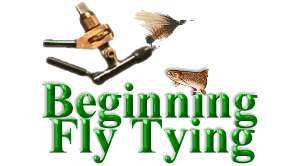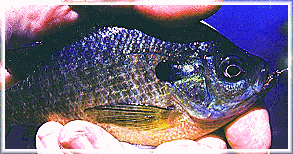|
7. Dub from the head space back to the hackle, forming a smooth thorax.
Leave the thread at the hackle tie-in point.

8. Using a Griffin rotating hackle plier, wrap the hackle forward, back
and forward again. Keep the hackle even on both sides of the wing.

9. Keeping tension on the hackle, bring the thread forward through the
hackle, over the hook in front of the hackle, then over the hackle tying
it down.

10. Trim the hackle tip, form a head, whip finish and cement. Trim the
hackle flat or in a V on the bottom of the fly.

Another popular style of dry flies uses hackle tips for wings. I'll
show you one method of attaching hackle tip wings this time, and another
method next time. For the gentleman who asked about gray drake patterns,
this and several of the previous patterns should fill that need. Just
match the body and wing colors with the appropriately colored materials
and create a gray drake fly that suits your needs.
Materials:
Hook: Standard dry fly; Mustad 94840, Tiemco 100, Eagle Claw L059,
Daiichi 1180. Size 10 - 22.
Tail: Hackle fibers, moose hair, any other fine, stiff hair, synthetic
tailing material. Color to match the natural insect you're imitating or
the hackle.
Body: Angler's Choice pure silk dubbing, mink under-fur, muskrat
under-fur, or any other synthetic or natural fine dubbing. Color to
match the body of the insect you want to imitate.
Wings: Hackle tips, color to match the wings of the natural insect you
want to imitate. Length of the wings should be about 1 1/2 times the
hook gap.
Hackle: Quality neck or saddle hackle, webby parts removed and 1/16"
of the remaining stem stripped of barbules. Color to match natural
insect or any pattern you want to tie. (In this case, a gray dun.)
Thread: 6/0 to 10/0 Gudebrod or equivalent, color to match body or
black.
Tying steps:
1. Create a tail of your choice, standard or split. Since this is a
standard type of fly, I used a standard tail.
2. Select a pair of matching hackles and measure for wing length. If you
prefer, mark the stems of the feathers at the proper length.

3. Turn the hackle tips so that the backs (shiny sides) face each other
(curvature facing out).

|

























